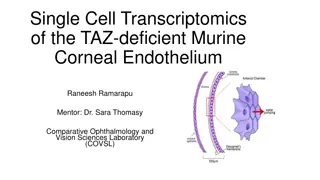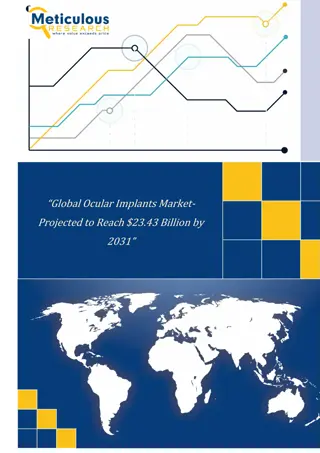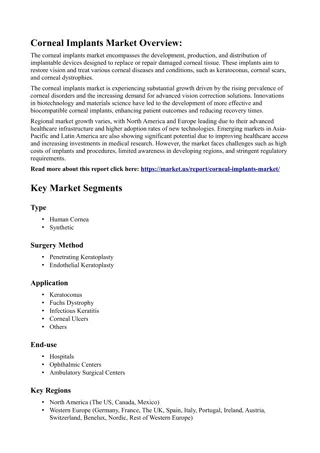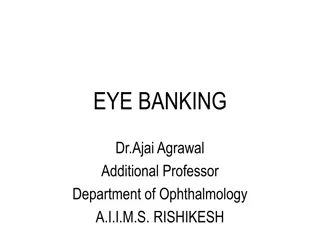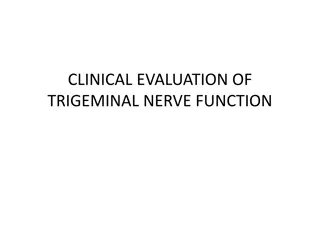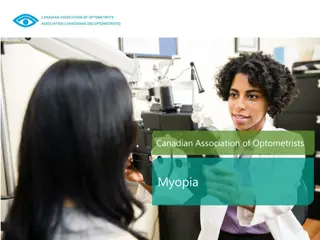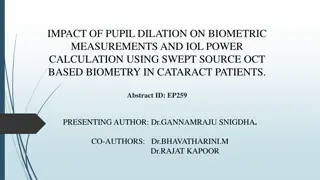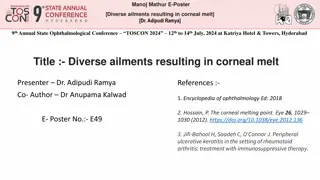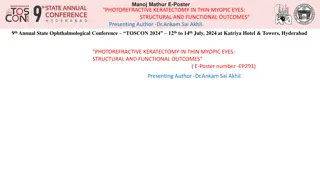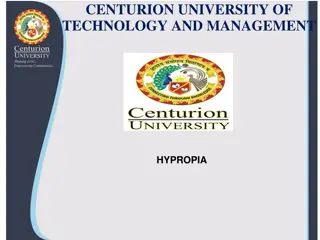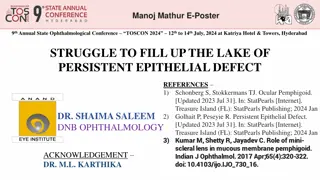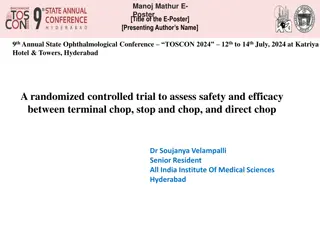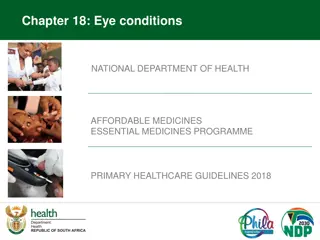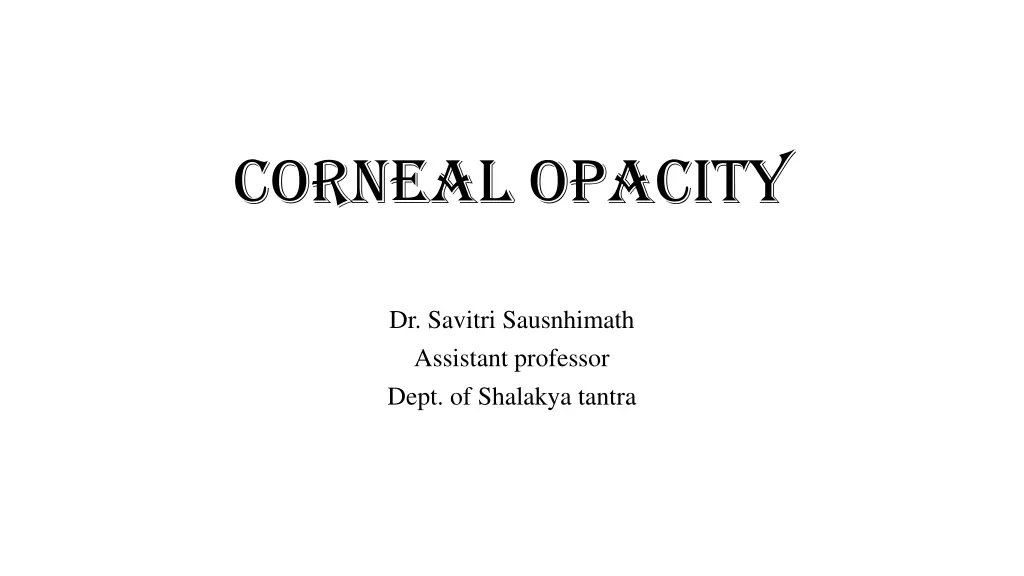
Understanding Corneal Opacity and Transparency
Learn about corneal opacity, its causes, and different types of corneal opacities like nebula, macula, and leucoma. Discover the abnormalities affecting corneal transparency and congenital causes of sclerocornea. Find out how corneal opacity can result from conditions such as scarring, drying of the cornea, and inflammations. Explore images and descriptions to deepen your understanding of corneal health.
Download Presentation

Please find below an Image/Link to download the presentation.
The content on the website is provided AS IS for your information and personal use only. It may not be sold, licensed, or shared on other websites without obtaining consent from the author. If you encounter any issues during the download, it is possible that the publisher has removed the file from their server.
You are allowed to download the files provided on this website for personal or commercial use, subject to the condition that they are used lawfully. All files are the property of their respective owners.
The content on the website is provided AS IS for your information and personal use only. It may not be sold, licensed, or shared on other websites without obtaining consent from the author.
E N D
Presentation Transcript
Corneal opacity Dr. Savitri Sausnhimath Assistant professor Dept. of Shalakya tantra
Scarring or Opacity Scarring or Opacity If the ulcer is very superficial and involves epithelium only, it heals without leaving any opacity. When the Bowman s and few superficial stromal cells are involved (up to 1/3rd), the resultant opacity is called Nebula (fog or mist) - describes a hard-to-see corneal scar - one where slit-lamp detection is required.
If it involves >1/3rdof Stroma, the resultant opacity is called Macula (stain or spot). It can be seen with proper illumination (Torch light) If the Descemets and endothelium is involved, it is called Leucoma (white) is a white scar that is easily seen just by looking at the eye.
ABNORMALITIES OF CORNEAL TRANSPARENCY Normal cornea is a transparent structure. Drying of cornea Any condition which upsets its anatomy or Depositions on cornea physiology causes loss of its transparency to Inflammations of cornea some degree. Corneal degenerations Common causes of loss of corneal Dystrophies of cornea transparency are: Vascularization of cornea Corneal oedema Scarring of cornea (corneal opacities).
CORNEAL OPACITY The word 'corneal opacification' literally means loss of normal transparency of cornea, which can occur in many conditions. Corneal opacity is used particularly for the loss of transparency of cornea due to scarring.
1. S Sclerocomea Congenital opacities causes can be remembered by the pneumonic (STUMPED): T Tear in Descemet's membrane, Congenital glaucoma, birth trauma. U Ulcer: HSV, bacterial, neurotropic. M Mucopolysaccharidosis, Mucolipidosis, Tyrosinosis. Causes P Posterior corneal defect: Peter's anomaly, posterior keratoconus. E Endothelial dystrophy: Congenital hereditary posterior polymorphous. D Dermoid 2. Healed corneal wounds. 3. Healed corneal ulcers.
Clinical features Corneal opacity may produce loss of vision (when dense opacity covers the pupillary area) or blurred vision (due to astigmatic effect).
Types of corneal opacity Depending on the density, corneal opacity is graded as Nebula Macula Leucoma.
Nebular corneal opacity It is a faint opacity which results due to superficial scars involving Bowman's layer and superficial stroma. A thin, diffuse nebula covering the pupillary area interferes more with vision than the localised leucoma away from pupillary area. Further, the nebula produces more discomfort to patient due to blurred image owing to irregular astigmatism than the leucoma which completely curs off the light rays.
Macular corneal opacity. It is a semi-dense opacity produced when scarring involves about half the corneal stroma
Leucomatous corneal opacity (leucoma simplex) It is a dense white opacity which results due co scarring of more rhan half of the stroma
Adherent leucoma It results when healing occurs after perforation of cornea with incarceration of iris
Corneal facet Sometimes, the corneal surface is depressed at the site of healing (due to less fibrous tissue); such a scar is called facet.
Kerectasia ln this condition, corneal curvature is increased at the site of opacity (bulge due to weak scar).
Anterior staphyloma. An ectasia of pseudocornea (the scar formed from organised exudates and fibrous tissue covered with epithelium) which results after total sloughing of cornea, with iris plastered behind it is called anterior staphyloma
Treatment 1. Optical iridectomy. It may be performed in cases with central macular or leucomatous corneal opacities, provided vision improves with pupillary dilatation. 2. Phototherapeutic keratectomy (PTK) performed with excimer laser is useful in superficial (nebular) corneal opacities. 3. Keratoplasty provides good vis11t1/ results in uncomplicated cases with corneal opacities, where optical iridecromy is not of much use. 4. Cosmetic-coloured contact lens gives very good cosmetic appearance in an eye with ugly scar having no potential for vision. Presently, this is considered the best option, even over and above the tattooing for cosmetic purpose.
5. Tattooing of scar. It was performed for cosmeric purposes in the past. It is suitable only for firm scars in a quiet eye without usefu l vision. For tattooing Indian black ink, gold or platinum may be used. To perform tattooing, first of all, the epithelium covering the opacity is removed under topical anaesthesia (2% or 4% xylocaine). Then a piece of blotting paper of same size and shape, soaked in 4% gold chloride (for brown colour) or 2% platinum chloride (for dark colour) is applied over it. After 2-3 minutes, the piece of filter paper is removed and a few drops of freshly prepared 2% hydrazine hydrate solution are poured over it. Lastly, eye is irrigated vvith normal saline and patched after instilling antibiotic and atropine eye ointment. Epithelium grows over the pigmented area.


